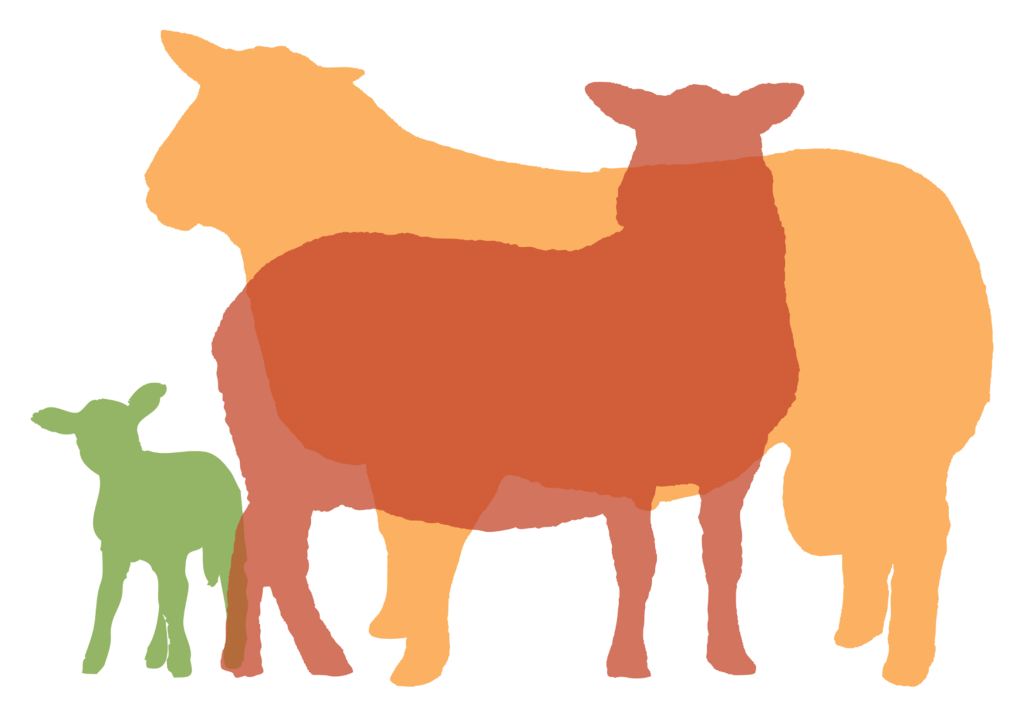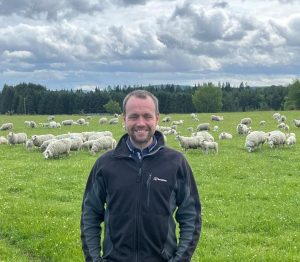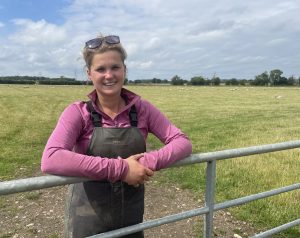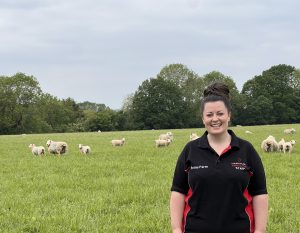Michael Skinner’s team at The Oaks is developing a 1,200 ewe enterprise for the future – one that is geared towards sustainability and without payments, and key to its success is a closed flock of Highlander ewes crossed to the Primera for quality finished lamb production.
“We’re on the road to where we want to be,” Michael explains. “We are phasing out a traditional Mule flock for the Highlander – they’re New Zealand bred genetics from Innovis, and already we are seeing a massive turn around in profitability as a result of being able to cut out our three biggest inputs – labour at lambing, purchased concentre and that annual capital lump sum in replacements. The system is now totally forage based and could be regarded as easy care.
“The Highlander ewes lamb outdoors in April, this year they scanned 210%, 93% lambed within the first 17 days. Together with help from my wife, Sarah we manage lambing ourselves; we no longer need to employ two vet students.
“During lambing I check the ewes two or three times a day and this season I only had to touch nine out of 709 ewes. The Highlander has been selected for unassisted lambing with a smaller head and narrower shoulders, and when left they make for great mothers. One of the most amazing thing about the Highlander is she always has sufficient milk off grass, consequently we no longer feed concentrate pre or post lambing.
Having started to build up a critical mass of purebred Highlander replacement ewe lambs, last season he introduced a portion of ewes to the New Zealand bred Primera, running one ram with 100 ewes. “We are targeting the entire crop to finish purely off grazed grass to an average 19kg to 20kg deadweight within 20 weeks. These Primera sired lambs have to be commended for vigour – the rate at which they get up and suck has to be seen to believe. The end goal is to put 60% of the Highlander flock to the Primera for finished lamb production, whilst we build up an ‘elite’ Highlander flock to breed replacements.”
In the meantime, Michael Skinner says the sheep enterprise is ‘in evolution’. The opportunity to reappraise his traditional Mule flock came in 2012 following MV infection which led to 50% of the flock being culled. “We decided there must be an easier way of farming sheep, and once we’d started looking we were surprised at the alternatives out there. The one that kept cropping up was the Highlander synonymous with an easy care system. Furthermore, Highlander ewes were noted for being good grazers and matured at a relatively smaller 60kg to 65kg. Equally important, they were bred from performance recorded stock.
“We initially started out investing in 400 Highland cross shearling ewes to grade up to purebred status. Once we’d experienced the benefits in year one, we decided to phase out the Mules along with the traditional terminal sires.”
In addition to changing flock genetics, Michael began to simultaneously improve the unit’s forage potential. Nowadays the ewes return from tack to Theddingworth in December to block graze 100 acres of forage rape for 12 weeks before being re-introduced to grazing and maintained in condition score 3.5 in the run up to lambing after which set stocking makes way for rotational grazing with 20% performance improvement being targeted. Reseeding and liming 200 acres, formerly in an HLS agreement, is scheduled to make a further significant contribution towards enterprise efficiency and a profitable unit without payments.



